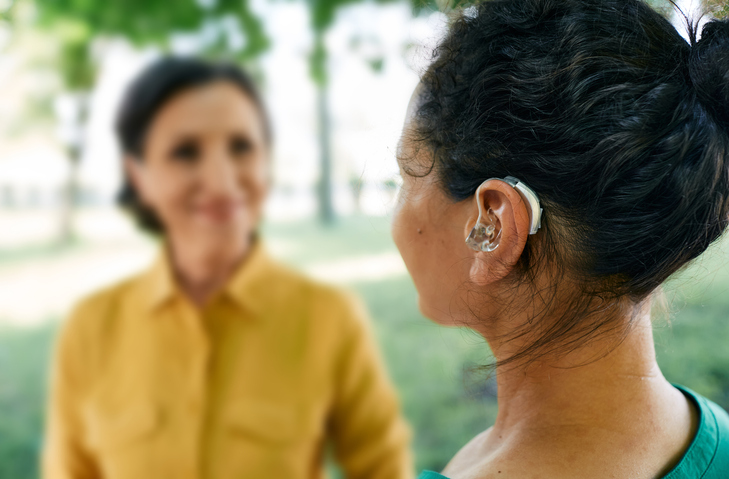
Useful Listening Devices for Deaf People/Hard of Hearing
Listening devices include any gadget apart from hearing aids that help hard of hearing or deaf people communicate effectively. These devices use vibrotactile or visual alerts and sound amplification to make communication easier. Also referred to as assistive devices, listening devices include a wide array of technology like telephone or television aids, signaling or alerting devices, large or personal area assistive listening tech, and more.
For many people, using alternative communication methods or hearing aids enhances their listening and communication skills. However, these methods cannot solve every difficulty caused by deafness or hearing loss alone. Therefore, individuals need to familiarize themselves with the wide range of resources they can utilize to make everyday life easier.
Listening Devices: Who can Use them?
Listening devices can improve understanding and communication among individuals with different degrees of hearing loss. For example, people with mild hearing loss may be better off without a hearing aid. Instead, using a listening device may help meet a particular listening need, like improved communication on the phone or convenience when watching the television.
Individuals with a greater degree of hearing loss can also benefit from listening devices instead of personal hearing aids. These devices provide cleaner, more effective communication in specific environments. Moreover, they also alert users to situations and sounds they may have missed because of adverse conditions.
Assistive devices can also be quite helpful for individuals with total or profound hearing loss as they can provide a vibrotactile or visual medium for improved telecommunication accessibility, identification, and detection of different sounds in the environment.
Different Listening Devices for Hard of Hearing and Deaf People
Listening devices have improved significantly over the years, and people with hearing issues can find many of them these days. There are two main types of assisting listening devices, and they are:
- Hardwired Listening Devices
- Wireless Listening Devices
Hardwired Listening Devices
As the name suggests, hardwired listening devices use a wire or cord for transmitting sound, tethering the user to the source of the sound. Hardwired assisted devices are usually affordable, portable, and easy to use. They are ideal for situations when the listener-to-speaker distance isn’t the best, such as in a restaurant, automobile, etc. These devices are also ideal as a temporary way to amplify sound, like in a nursing home, hospital, doctor’s office, etc.
One of the main disadvantages of a wired listening device is that its mobility is quite restricted because of the wire or cord’s length. This limits a hardwired listening device’s usefulness, especially in a tour group, meeting or classroom.
Wireless Listening Devices
Wireless listening devices send signals without a cord or connection between the listener and the sound source. Instead, these systems have a transmitter attached directly or close to the sound source and a wireless receiver used by the listener. The wireless transmission can either be in FM radio waves, electromagnetic energy, or invisible infrared light. Wireless technologies are usually portable, depending on the device range and signal strength.
There are different listening devices for improving sound transmission for the hard of hearing and deaf individuals. Some of these devices are for extensive facilities like airports, places of worship, theaters, and classrooms. Other types, however, are made for personal use, mainly for one-on-one conversations and small settings.
These devices can be used without or with cochlear implants or hearing aids. Listening devices for extensive facilities usually include infrared, frequency-modulated, and hearing loop systems.
Hearing Loop Systems: These systems utilize electromagnetic energy for transmitting sound. A hearing loop system consists of 4 parts:
- Receiver
- Amplifier
- Sound source (microphone, public address system, telephone, or home TV)
- A thin wire loop encircling the room or beneath the carpeting
Personal Amplifiers: These devices come in handy in places where FM systems and hearing loop systems are unavailable or when someone is traveling in a car, outdoors, or watching television. Personal amplifiers are almost the size of small cell phones and can reduce background noise and increase the sound level for listeners.
Some personal amps also have directional microphones, which users can angle towards the speaker and other sound sources. Like most assisted listening devices, personal amplifiers can pick up sounds from a receiver worn by the listener in the form of earbuds or a headset.
FM Systems: FM systems utilize radio signals for transmitting amplified sounds. These systems are usually handy for classrooms where teachers have tiny microphones attached to a transmitter. At the same time, the students use the receiver tuned to a particular channel or frequency. Individuals with telecoils inside their cochlear implant or hearing aids may wear neck loops, essentially wires around the neck.
FM systems can also transmit signals over 300 feet and can be used in various public spots. However, since radio signals can penetrate walls, people may need to choose a different channel than those used in other rooms to avoid mixed signals.
Infrared Systems: These systems utilize infrared light for transmitting sound. Transmitters convert sound to light signals and then send it to the receiver worn by the listener.
Receivers decide infrared signals to sound. Like FM systems, people with cochlear implants or hearing aids with a telecoil can also wear a silhouette inductor or neck loop to convert the infrared signal to a magnetic one.
Unlike FM systems or induction loops, infrared signals cannot go through walls, which makes them quite useful for courtrooms and other areas where people discuss confidential information. That said, infrared systems can’t be used in places with multiple light sources like strongly lit rooms or the outdoors.




